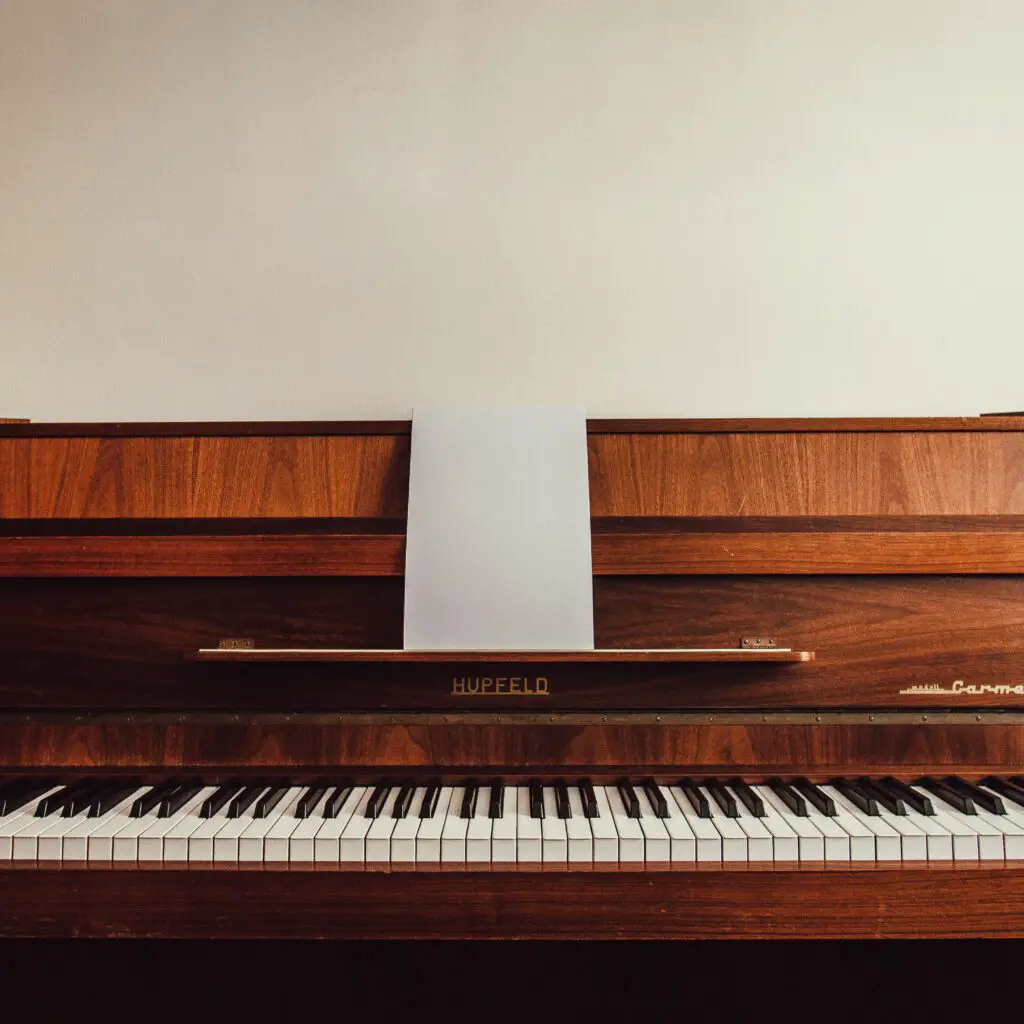If you’re asking, “what’s a piano forte?” this comprehensive guide is here to enlighten you. Designed for both novices and enthusiasts, we’ll break down its history, components, and everything in between.

Table of Contents
Definition: What’s a Piano Forte?
The piano forte, commonly known as the piano, is a musical instrument that belongs to the keyboard family. What sets it apart from other keyboard instruments like the harpsichord or the organ is its capacity for a wide range of volume control. The term ‘piano forte’ is derived from two Italian words: ‘piano,’ meaning soft, and ‘forte,’ meaning loud.
This nomenclature describes the instrument’s unique ability to produce sounds at varying dynamics. Unlike the harpsichord, which plucks strings at a uniform volume, the piano forte employs a hammer mechanism that allows you to control the loudness or softness of each note simply by the force applied on the keys. This nuanced control offers musicians greater artistic freedom and expressive range.
The History of the Piano Forte
The history of the piano forte is both rich and fascinating, with its roots going back to earlier keyboard instruments. Specifically, it was invented in the early 18th century by Bartolomeo Cristofori, an Italian instrument maker. Cristofori aimed to improve upon the limitations of the harpsichord, which could not vary the volume of its sound. To solve this issue, he innovated a new hammer action that struck the strings, allowing musicians to control the dynamics.
This invention resulted in a groundbreaking instrument that was initially called “gravicembalo col piano e forte,” meaning “harpsichord with soft and loud” but was later shortened to “piano forte,” and eventually to just “piano.” Over the years, the design and mechanisms have undergone significant changes, thanks to the contributions of various craftsmen and musicians.
Yet, the core principle of dynamic control that defines a piano forte remains unchanged, solidifying its place as an essential instrument in diverse musical genres and settings.
The Basic Components
When you’re exploring a piano forte, it’s crucial to understand the core components that make up this versatile instrument. These elements work in harmony to create the wide range of tones and dynamics the piano forte is renowned for. Let’s take a more detailed look:
Keys: The white and black notes that you’ll press form the visible part of the keyboard. Typically, a standard piano has 88 keys, with the white keys representing natural notes and the black keys representing sharps and flats. The keys act as levers, triggering a hammer mechanism when pressed.
Hammers: Hidden inside the piano, hammers are felt-tipped mechanisms that strike the strings when a key is pressed. The speed and force at which the hammer strikes the strings determine the volume and tonal quality of the note produced.
Pedals: Located at the base, pedals are foot-operated levers that affect the sound in various ways. The most commonly used are the sustain pedal (on the right), which allows notes to linger, and the soft pedal (on the left), which reduces the volume and slightly changes the timbre.
How To Play the Piano Forte
Understanding a piano forte lays the groundwork, but to truly appreciate the instrument, you’ll want to learn how to play it. Here’s a step-by-step guide to help you get started:
Seat Yourself: Proper posture is crucial when playing the piano forte. Sit at the center of the keyboard bench, with your feet flat on the ground and your back straight. The height of the bench should be adjusted so your arms are parallel to the ground when resting on the keys.
Hand Placement: Place your hands on the keys in a relaxed position, with your fingers slightly curved. The tips of your fingers should gently touch the white keys, usually starting with the “C” key for beginners. This natural hand position allows for optimal reach and control over the keys.
Basic Keys: To produce sound, start by pressing one key at a time with enough force to trigger the hammer mechanism but without any undue stress on your fingers. This will give you a feel for the sensitivity of the keys and help you understand the dynamics of sound production.
Using Pedals: The right pedal, known as the sustain pedal, is a good starting point. Press it down to allow the notes to resonate longer, creating a fuller, more sustained sound. Lift your foot to stop the sustain and clear the sound. Practice using the pedal while playing to get used to the effect it has on the music.
For more articles on piano questions, click here: Piano Questions: Your Ultimate Guide to Understanding All About Pianos
Conclusion: What’s a Piano Forte?
You’ve journeyed through almost everything about the piano forte, from its history to playing your first note. It may seem complex, but with patience and practice, mastery is within your reach.